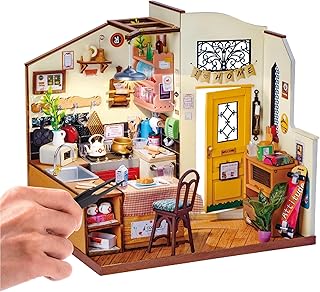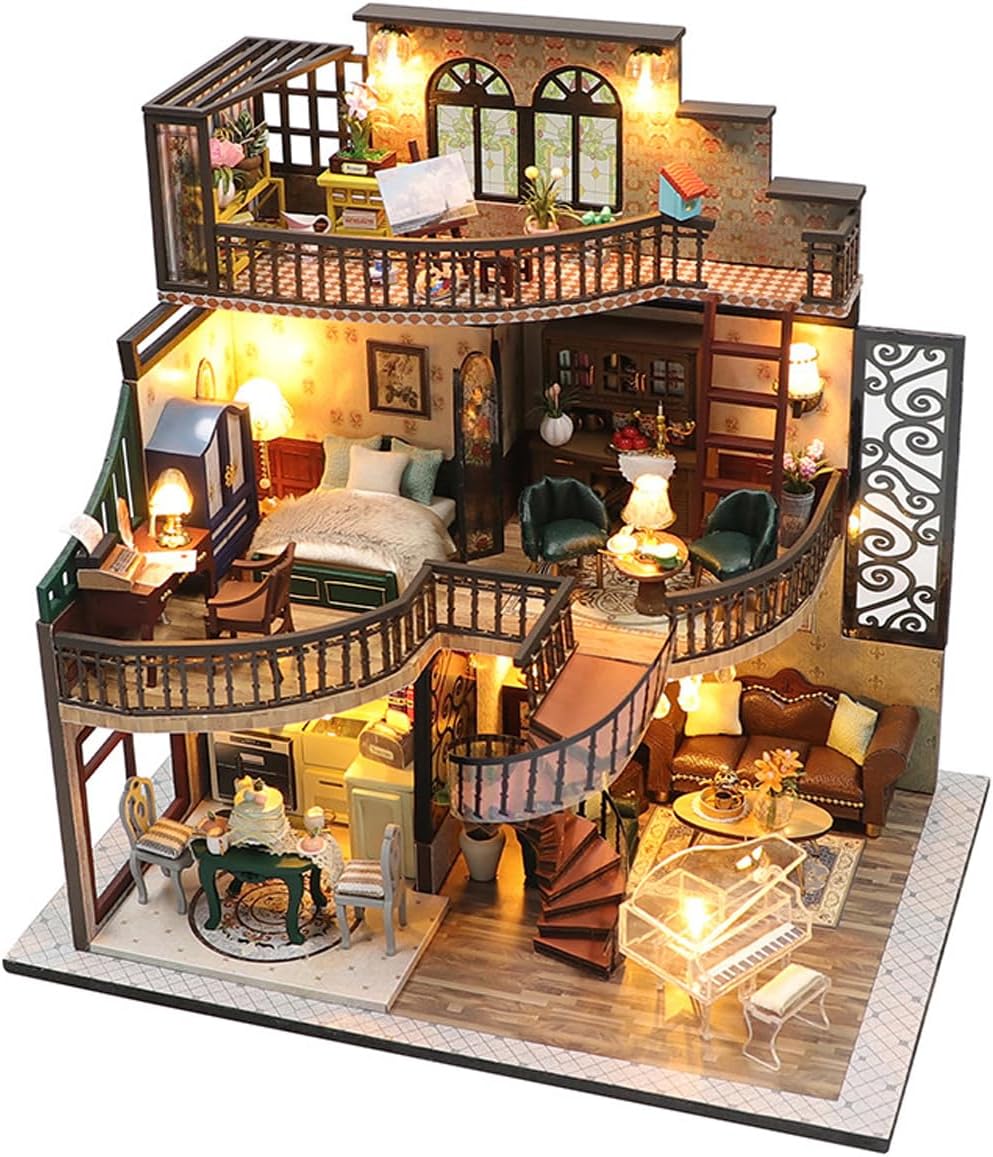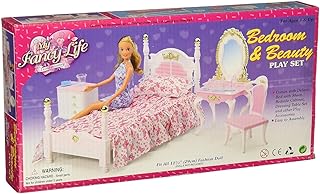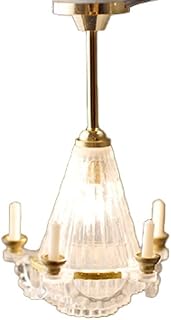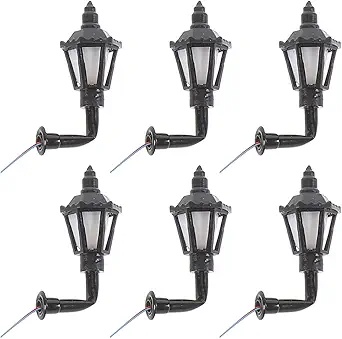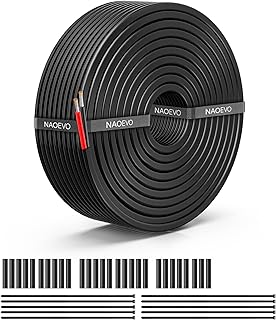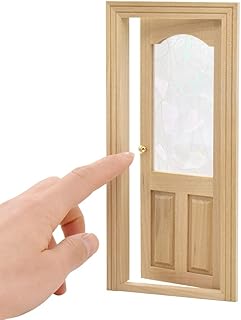From Sacred Idols to Sinister Toys: The Complete History of Haunted Dolls
There is a primal unease that a doll can evoke. Its glassy eyes, fixed in a permanent stare, seem to follow you. Its silent, smiling mouth hints at a knowledge it cannot share. For centuries, dolls have been our cherished companions, miniature versions of ourselves used for play, comfort, and education. Yet, lurking just beneath this innocent facade is a deep-seated cultural fear: the terrifying possibility that a doll is not just an object, but a vessel. That it can watch, move, and even harbor a malevolent will of its own.
This fear is not a modern invention born from horror movies. The history of haunted dolls is a long and chilling journey that stretches back to the ancient world, weaving through psychology, folklore, and the darkest corners of human belief. To understand why we fear these inanimate objects, we must trace their evolution from sacred effigies in ancient tombs to the cursed commodities sold on eBay today. This is the definitive history of the haunted doll.
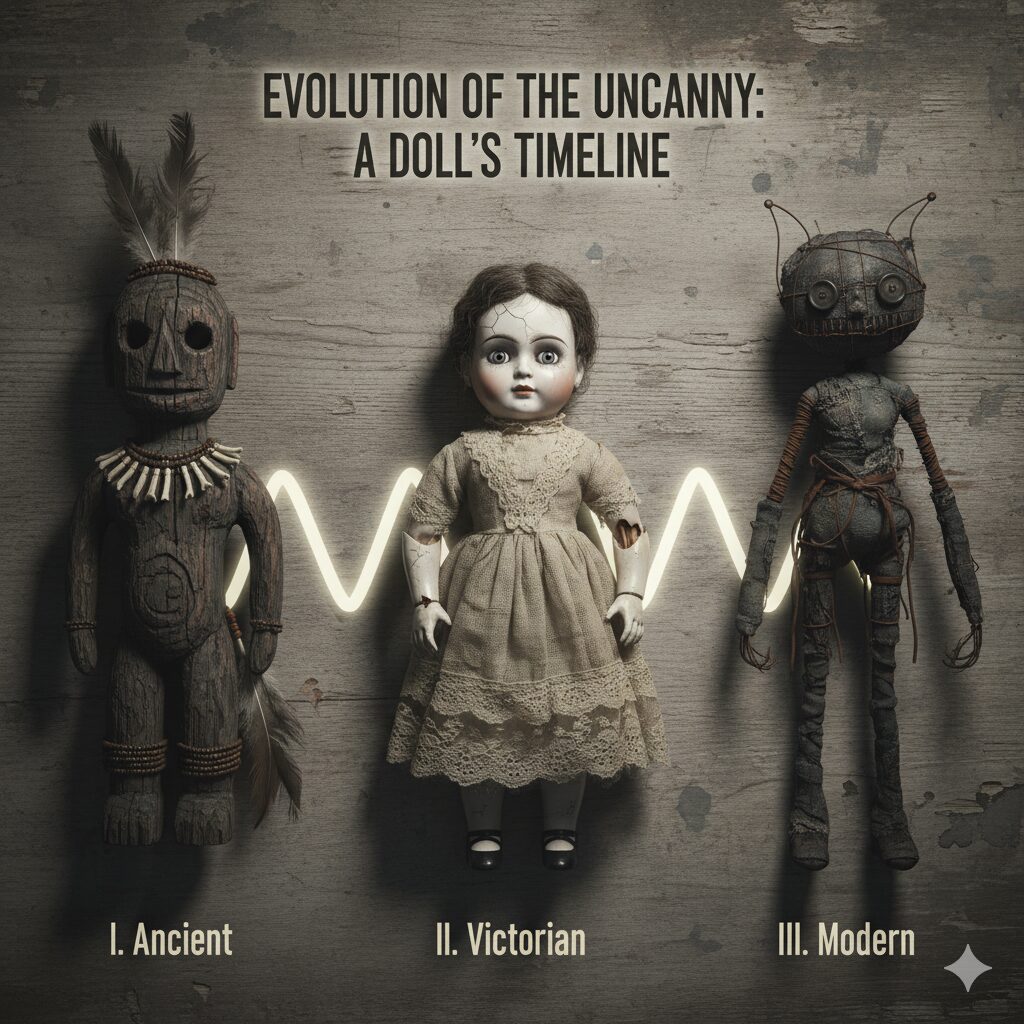
Key Figures in Haunted Doll History
- Poppets & Effigies (Ancient)
- Robert the Doll (c. 1904)
- Okiku (c. 1918)
- Annabelle (c. 1970)
- Mandy the Doll (c. 1910-20)
- Letta the Gypsy Doll (c. 1700s)
- The Island of the Dolls (1950s)
- Modern “Spirit Dolls” (2000s)
Ancient Origins: Dolls as Vessels for the Supernatural
Long before the first ghost story was whispered in a Victorian nursery, dolls held a powerful, supernatural significance. In the ancient world, these miniature human forms, or “effigies,” were rarely considered mere playthings. They were tools of magic, conduits to the spirit world, and companions for the dead.
Egypt, Greece, and Rome: Companions for the Afterlife
In Ancient Egypt, paddle dolls made of wood and clay have been found in tombs dating back to 2000 BCE. These weren’t toys for a deceased child, but are believed to have been ritual objects associated with fertility and rebirth, intended to serve the deceased in the afterlife. Similarly, Greek and Roman tombs often contained articulated dolls made of clay, bone, or ivory. Young girls would dedicate their dolls to goddesses like Artemis or Venus upon reaching maturity, marking a transition from childhood and symbolically offering their youthful spirit to the divine.
This practice establishes a foundational concept: dolls were seen as substitute bodies or vessels capable of containing or representing a person’s spirit. This is the crucial first step in the journey toward the haunted doll. If a doll can house a spirit for a divine purpose, it can surely house one for a malevolent one.
Poppets and Voodoo Dolls: Instruments of Magic
The most direct link between ancient dolls and supernatural power is the “poppet.” A poppet is a doll made to represent a person, for the purpose of casting spells on them or aiding them through magic. This practice, known as sympathetic magic, is found in cultures across the globe.
The belief that an action performed on an effigy will be transferred to the person it represents is one of the oldest forms of magical thinking.
The most famous example is the Voodoo doll, though its popular portrayal as a tool of revenge is largely a Hollywood invention. In authentic Vodou practice, these dolls are more often used for healing, guidance, or to petition spirits (Loa). Regardless of intent, the principle is the same: the doll is a physical link to a person’s soul or spiritual energy. It is not inert; it is active and powerful.
The Uncanny Valley: When Realism Becomes Terrifying
For centuries, dolls were stylized representations of humans. But as technology and artistry advanced, particularly in the 18th and 19th centuries, dolls became increasingly lifelike. The invention of the “automaton”—a self-operating mechanical doll—was a milestone. These clockwork creations could breathe, write, or play music, blurring the line between machine and living being.
This push towards realism triggered a specific psychological discomfort, later defined in 1970 by roboticist Masahiro Mori as the “Uncanny Valley.” Mori’s theory states that as a robot or object looks more human, our emotional response becomes more positive, until a point where it becomes *too* similar, yet still recognizably artificial. At this point, our positive feelings plunge into a “valley” of revulsion and fear. A doll with realistic glass eyes, human hair, and a porcelain skin-like texture sits squarely in this valley.
The Victorian era, with its elaborate porcelain dolls and high infant mortality rates, amplified this effect. “Mourning dolls” were sometimes created to commemorate a lost child, further cementing the association between dolls and the spirits of the dead. This psychological priming created the perfect environment for the birth of the modern haunted doll legend.
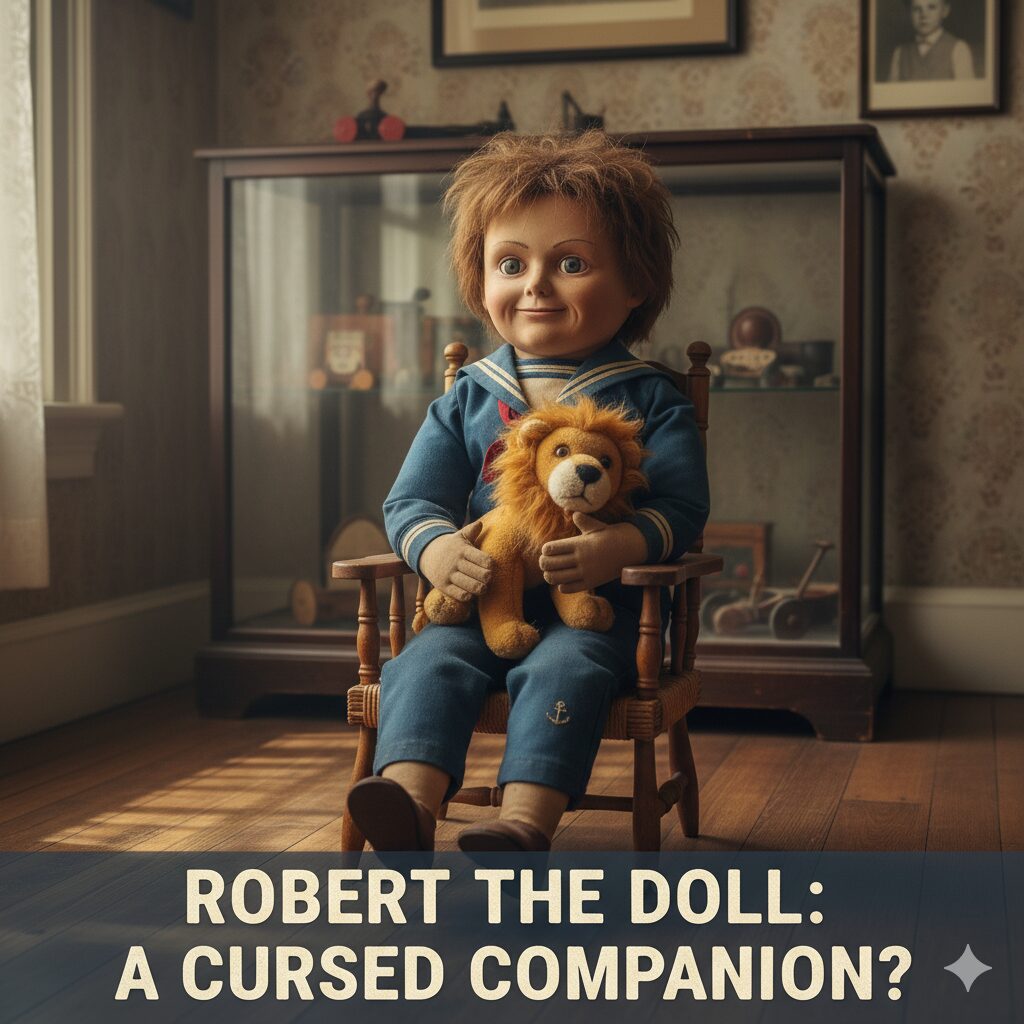
Robert the Doll: The Terrifying King of Key West
No history of haunted dolls is complete without a deep dive into the story of Robert, arguably the most famous and purportedly most active haunted doll in the world. His legend contains all the classic elements that would define the genre for the next century.
The Origin Story
The story begins around 1904 in Key West, Florida. A young boy named Robert Eugene “Gene” Otto was given a doll, reportedly by a Bahamian servant who worked for his family. Folklore claims the servant was skilled in voodoo and cursed the doll after being mistreated by the Ottos. The doll, a 40-inch tall figure stuffed with wood wool and wearing a sailor suit, was named “Robert” by Gene.
From the start, the relationship was intense. Gene took Robert everywhere, talked to him, and even began to speak of him in the first person, often using “we” to describe his actions. When things went wrong, Gene’s explanation was always the same: “Robert did it.”
Escalating Malevolence
Soon, the claims turned sinister. The Otto family reported hearing giggling and footsteps coming from Gene’s room at night. They would enter to find furniture overturned and Gene terrified in his bed, insisting Robert was responsible. Neighbors claimed to see the doll moving from window to window when the family was out. Gene’s parents allegedly heard him having conversations with the doll, with a second, deeper voice responding.
Robert remained with Gene into adulthood. Gene became an artist, and Robert was given his own room in the attic, where he would sit in a chair and stare out the window. After Gene’s death in 1974, the house was sold. The new owners’ young daughter soon became terrified of the doll, claiming it came alive at night and tried to attack her. Robert was eventually donated to the Fort East Martello Museum in Key West in 1994, where he remains a top tourist attraction today.
Visitors to the museum claim Robert continues his mischief. Staff report flickering lights and strange electronic malfunctions near his glass case. It is said you must ask Robert’s permission before taking his photo, and those who fail to do so will be cursed with misfortune. The museum’s walls are covered with letters of apology sent to Robert from people begging him to lift his curse.
Annabelle: The Modern Icon of Demonic Dolls
While Robert is the historical king, Annabelle is the modern queen. Her story, made famous by demonologists Ed and Lorraine Warren, propelled the haunted doll from a folkloric curiosity into a mainstream horror icon. The legend begins in 1970 when a nursing student named Donna was gifted a simple Raggedy Ann doll.
The doll soon began to exhibit strange behavior, changing positions and moving between rooms on its own. The activity escalated to handwritten notes appearing on parchment paper. A medium claimed the doll was inhabited by the spirit of a deceased seven-year-old girl named Annabelle Higgins. Taking pity on the spirit, Donna gave it permission to stay. According to the Warrens, this was a grave mistake.
The activity turned violent, culminating in a physical attack on a friend. Ed and Lorraine Warren were called in and declared that the doll was not possessed by a human spirit, but was being manipulated by a demonic entity. For a truly exhaustive analysis of their claims, you should read the full article on is Annabelle a true story? It separates the folklore from the documented facts.
The Warrens took the doll and encased it in a blessed glass box in their Occult Museum. This story became the foundation for *The Conjuring* Universe, a film franchise that has terrified a new generation. The films, however, take significant creative liberties, including changing the doll’s appearance to a far more menacing porcelain figure. The cinematic narrative is a beast of its own, and our complete guide, Annabelle movie explained, breaks down the entire fictional storyline.
A World of Haunted Playthings: Other Notable Dolls
The fear of haunted dolls is a global phenomenon. While Robert and Annabelle are the most famous in the U.S., other cultures have their own terrifying tales.
- Okiku, the Growing Hair Doll (Japan): Housed in a temple in Hokkaido, Japan, Okiku is a small doll in a kimono. Legend says it was purchased in 1918 for a little girl who died of influenza. The family kept the doll in a shrine and soon noticed its hair was growing. Scientific analysis has never been conclusive, but priests at the temple periodically trim the doll’s hair, and they claim it continues to grow to this day.
- Mandy the Doll (Canada): Donated to the Quesnel Museum in British Columbia in 1991, Mandy is a porcelain baby doll with a cracked, unsettling face. Her donor claimed to hear crying from the basement at night and gave the doll away to make it stop. Museum staff have reported strange occurrences, from objects going missing to footsteps being heard when no one is around.
- The Island of the Dolls (Mexico): South of Mexico City lies Isla de las Muñecas, a horrifying tribute to a lost soul. The island’s former caretaker, Don Julián Santana Barrera, discovered the body of a drowned girl. Haunted by her spirit, he began collecting and hanging dolls from the trees to appease her. He spent 50 years turning the island into a grotesque wonderland of decaying, dismembered dolls, many of which are said to be possessed by spirits.
Pop Culture and the Modern Haunted Doll Market
While the folklore is rich, Hollywood is responsible for cementing the haunted doll as a pillar of the horror genre. The 1963 *Twilight Zone* episode “Living Doll,” featuring the menacing Talky Tina, was a landmark moment. But it was the 1988 film *Child’s Play* that created the first true haunted doll superstar: Chucky, a “Good Guy” doll possessed by the soul of a serial killer.
Chucky’s success paved the way for countless other cinematic terrors, including the films of *The Conjuring* Universe. If you’re looking to explore this genre, you can always find out where to watch Annabelle and other related films online. These movies and TV shows have created a feedback loop: the more we see haunted dolls in media, the more we are primed to believe the stories we hear, and the more new legends are born.
This has led to a bizarre modern phenomenon: the online market for haunted dolls. Platforms like eBay and Etsy have listings for “spirit dolls” or “positively charged” vessels, often sold by paranormal investigators or mediums. Buyers seek them out for curiosity, as a paranormal research tool, or for companionship. This commercialization marks the latest chapter in the doll’s long history—no longer just a cursed object to be feared, but a supernatural commodity to be bought and sold.
Explore the Archives of the Unexplained
The history of haunted dolls is a deep and fascinating subject, touching on history, psychology, and paranormal investigation. For those who wish to learn more, there are many excellent resources available. The following are some of the best-selling and most respected books about haunted dolls and paranormal phenomena.
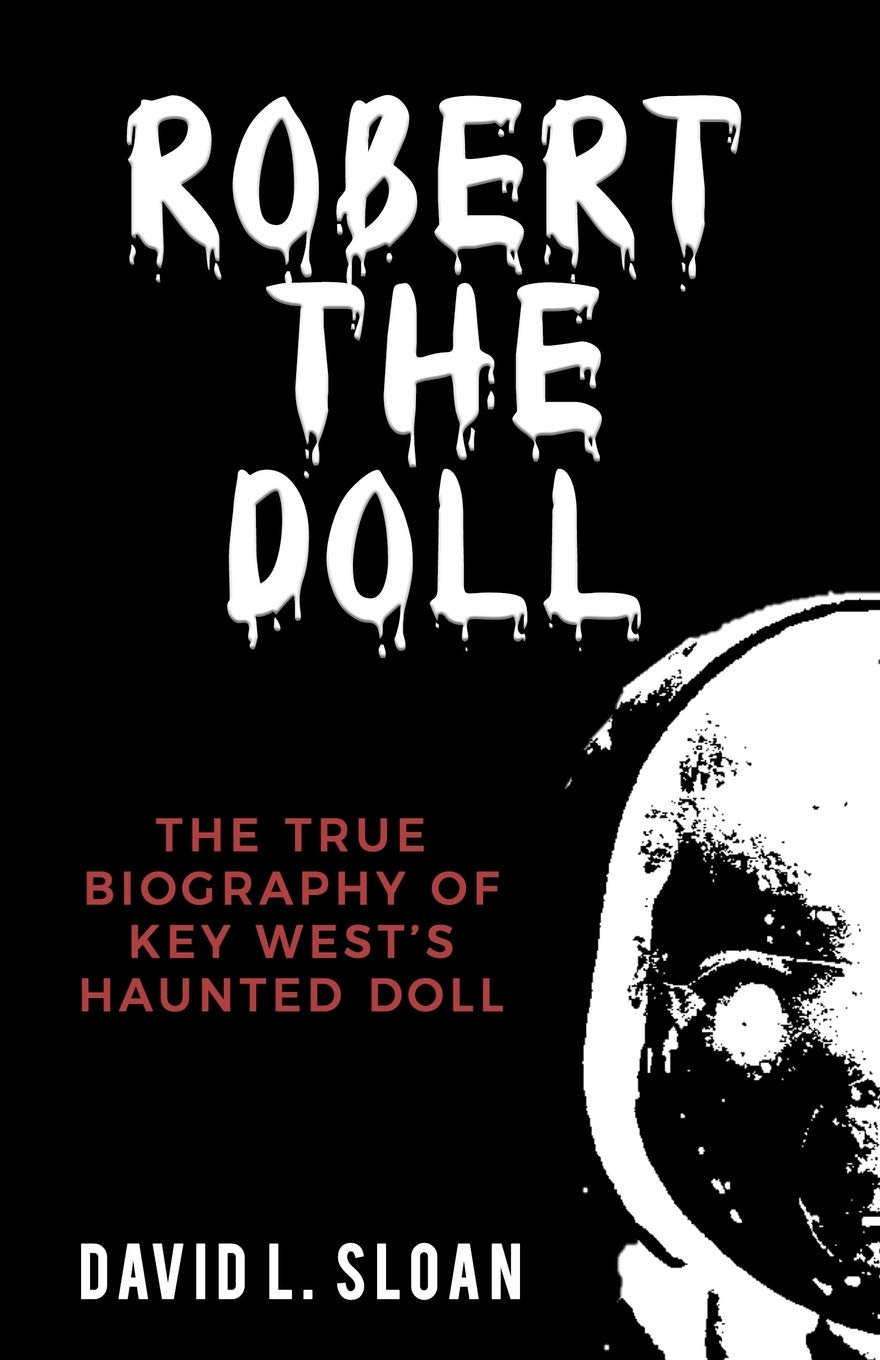
Robert the Doll by David L. Sloan
The definitive biography of the world’s most haunted toy. Historian David L. Sloan separates fact from fiction, delving into the Otto family history and the documented accounts of Robert’s strange behavior.
View on Amazon
The Demonologist by Gerald Brittle
The official biography of Ed and Lorraine Warren. This book provides their firsthand account of the Annabelle case and many other famous hauntings, offering a look into their controversial methods and beliefs.
View on Amazon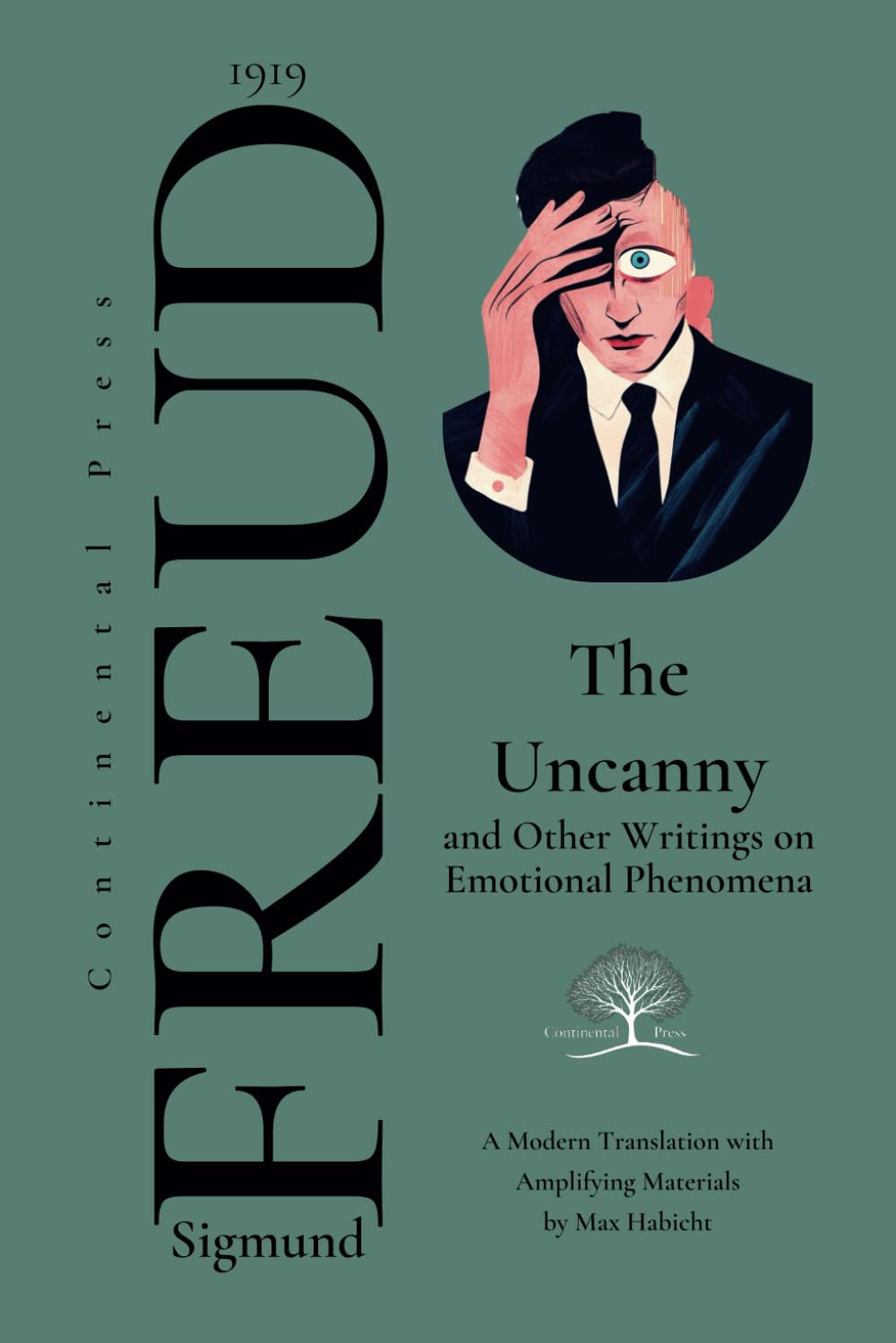
The Uncanny by Sigmund Freud
For a deeper, psychological understanding of why we find dolls creepy, go to the source. Freud’s 1919 essay explores the concept of the uncanny—the feeling of familiar things becoming strange and frightening.
View on AmazonConclusion: An Enduring Legacy of Fear
The journey of the haunted doll is the story of humanity’s relationship with the objects we create in our own image. From sacred vessels imbued with spiritual power to uncanny automatons that challenge our definition of life, dolls have always occupied a liminal space between the living and the inert. The haunted doll legend is the ultimate expression of this anxiety.
Whether you believe the stories of Robert, Annabelle, or Okiku are true paranormal events or simply the product of folklore and human psychology, their power is undeniable. They represent the corruption of innocence, the perversion of comfort, and the terrifying idea that we are never truly alone. The next time you see a doll, with its fixed smile and unblinking eyes, remember the centuries of history, magic, and fear that are staring back at you.
Frequently Asked Questions
1. What is considered the first haunted doll?
While ancient effigies had supernatural purpose, Robert the Doll, whose story begins around 1904, is widely considered the first “modern” haunted doll with a named identity and a detailed, multi-generational legend of malevolent activity.
2. Are there any scientific explanations for haunted dolls?
Yes, skeptics and scientists offer several explanations. These include psychological phenomena like pareidolia (seeing faces in objects) and confirmation bias (interpreting events to fit a pre-existing belief), simple misinterpretation of natural events (creaks, drafts), and in some cases, outright pranks or fabrications that evolve into folklore over time.
3. What is the Uncanny Valley?
The Uncanny Valley is a theory in aesthetics and robotics. It suggests that when an object (like a doll or a robot) looks and acts almost, but not perfectly, like a human, it causes a feeling of unease or revulsion. This psychological principle is a major reason why lifelike dolls are often perceived as creepy.
4. Can people buy and sell haunted dolls?
Yes, there is a thriving online market for allegedly haunted dolls. Sellers often provide elaborate backstories for the spirits attached to the dolls. These items are typically sold as curiosities or for paranormal research, but the authenticity of the claims is impossible to verify and is a matter of personal belief.
